Software To Help You Turn Your Data Into AI
Forget fragmented workflows, annotation tools, and Notebooks for building AI applications. Encord Data Engine accelerates every step of taking your model into production.

When you’re working with datasets or developing a machine learning model, you often find yourself looking for or hypothesizing about subsets of data, labels, or model predictions with certain properties.
Quality metrics form the foundation for finding such data and testing the hypotheses.
The core concept is to use quality metrics to index, slice, and analyze the subject in question in a structured way to perform informed actions when continuously cranking the active learning cycle.
Concrete example: You hypothesize that object "redness" influences the mAP score of your object detection model. To test this hypothesis, you define a quality metric that captures the redness of each object in the dataset. From the quality metric, you slice the data to compare your model performance on red vs. not red objects.
The best way to think of a quality metric in computer vision is:
By design, quality metrics are a very abstract class of functions because the accompanying methodologies are agnostic to the specific properties that the quality metrics express. No matter the specific quality metric, you can:
All of these are possible with Encord Active.
Data quality metrics are those metrics that require only information about the data itself. Within the computer vision domain, this means the raw images or video frames without any labels. This subset of quality metrics is typically used frequently at the beginning of a machine learning project where labels are scarce or perhaps not even existing.
Below are some examples of data quality metrics ranging from simple to more complex:
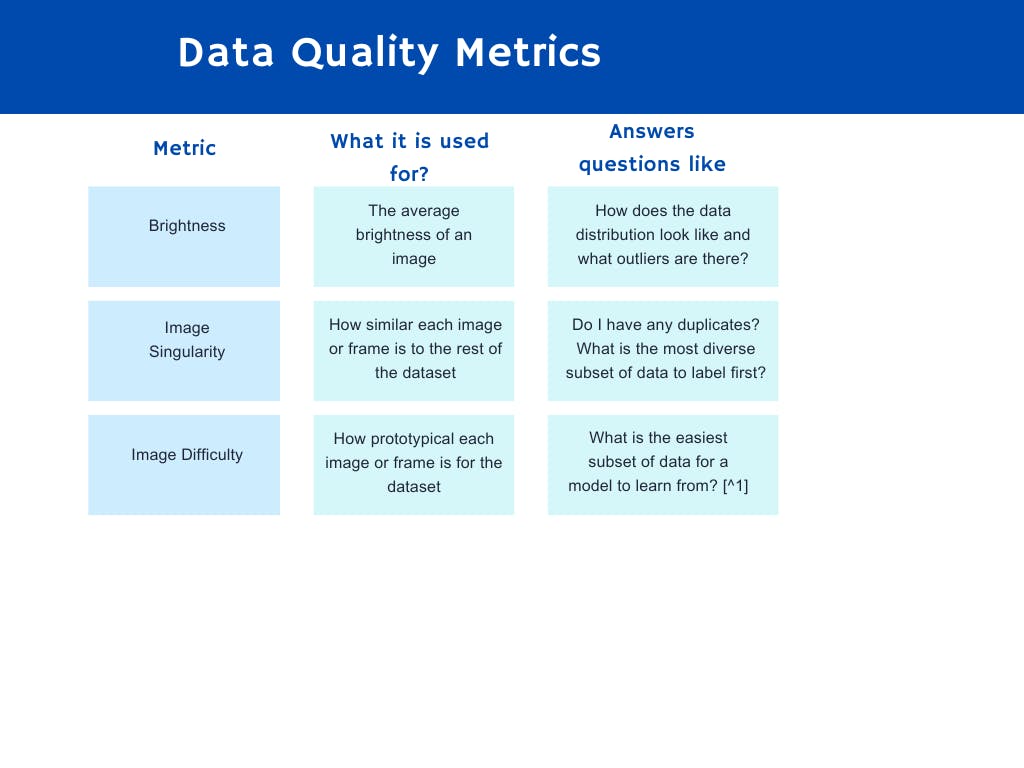
Image Brightness as a data quality metric on MS COCO validation dataset on Encord.

Image Singularity as a data quality metric on MS COCO validation dataset on Encord.
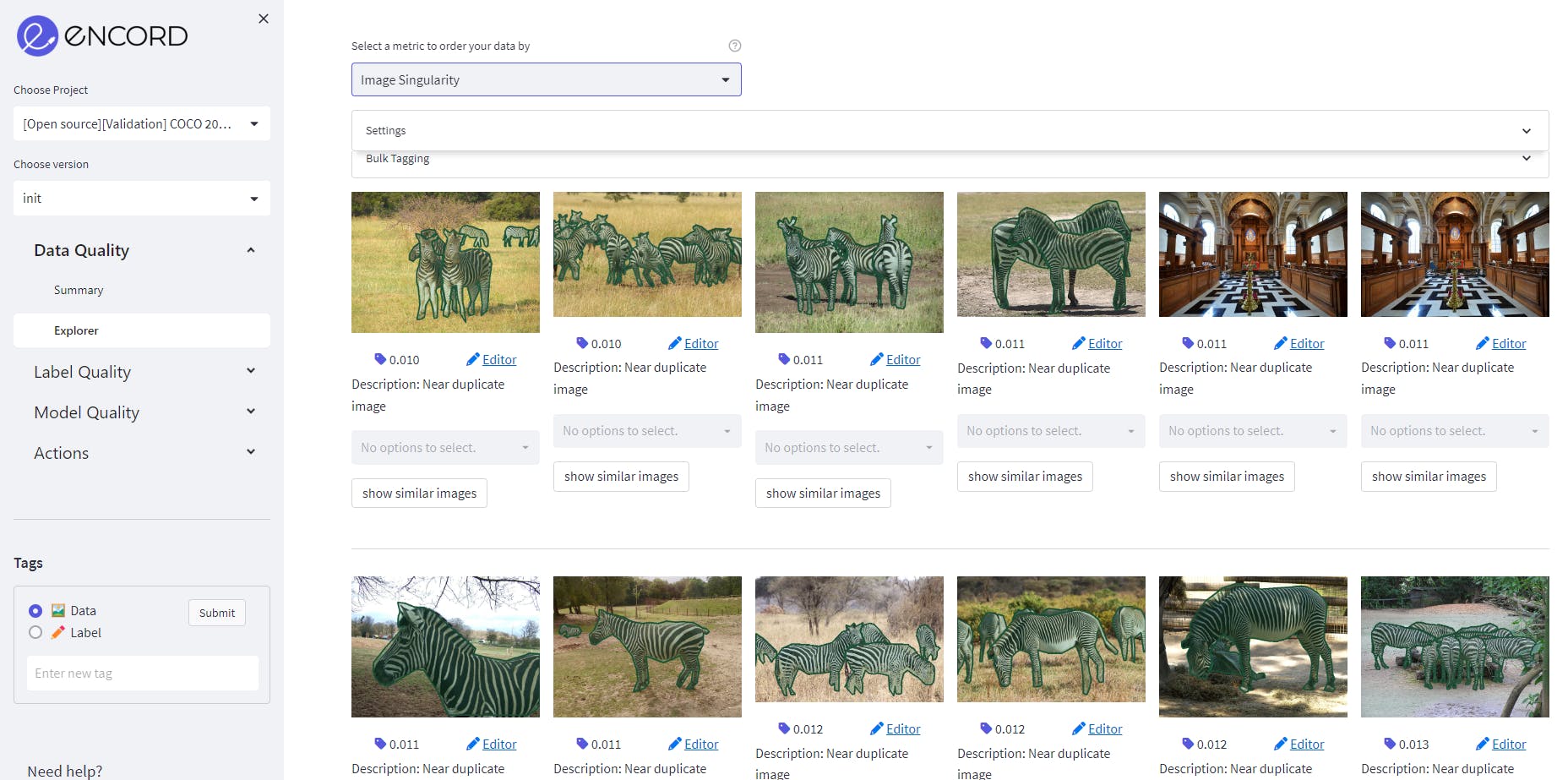
Label quality metrics apply to labels. Some metrics use image content, while others apply only to the label information. Label quality metrics serve many purposes, but some more frequent ones are surfacing label errors, model failure modes, and assessing annotator performance.
Here are some concrete examples of label quality metrics ranging from simple to more complex:
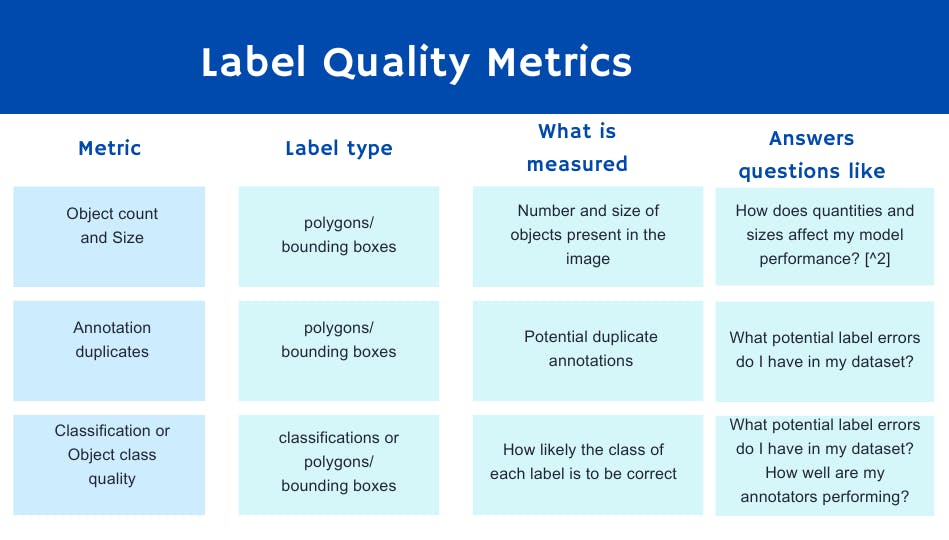
Object count as a label quality metric on MS COCO validation dataset on Encord.
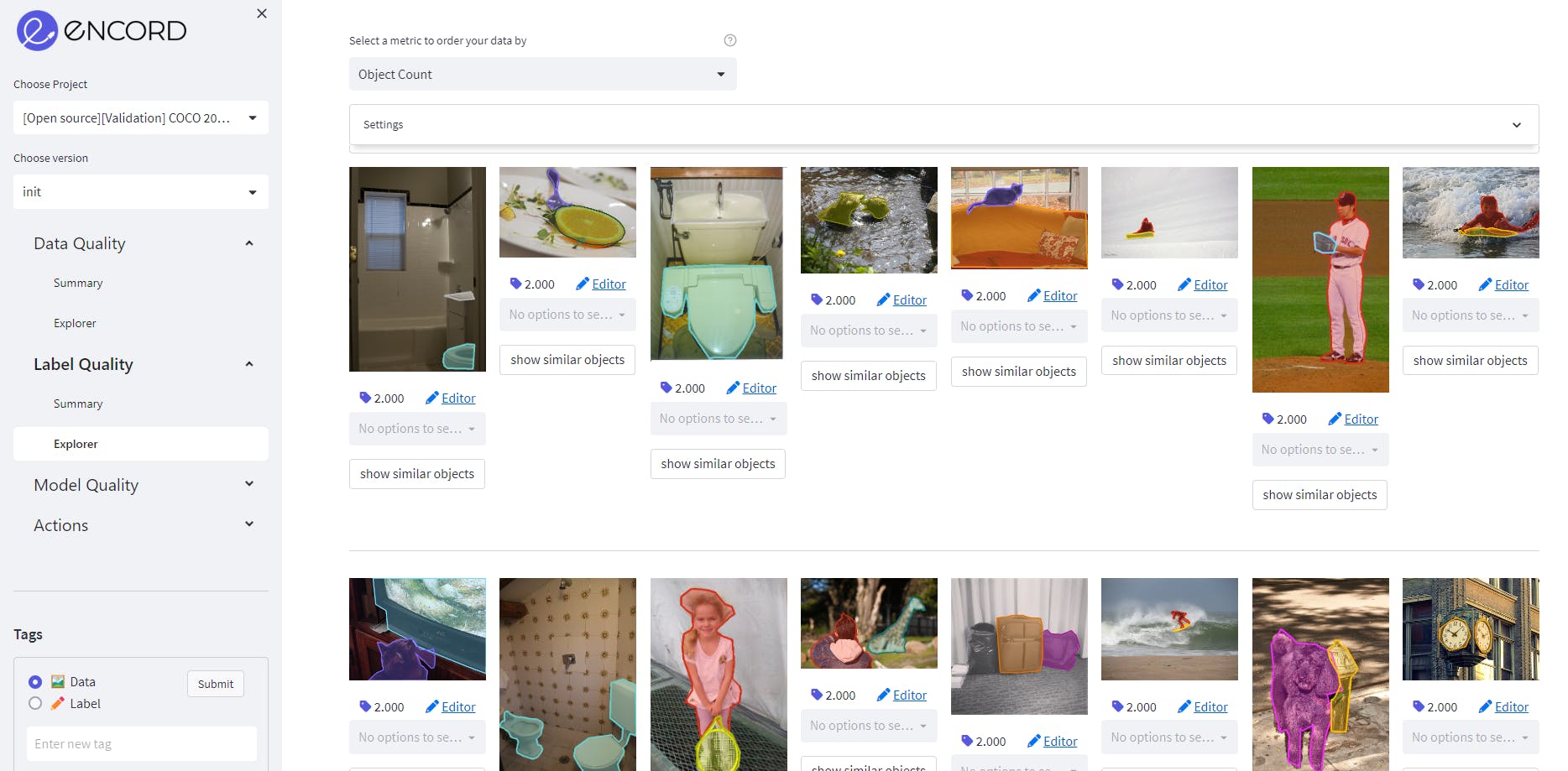
Annotation Duplicate as a label quality metric on MS COCO validation dataset on Encord.
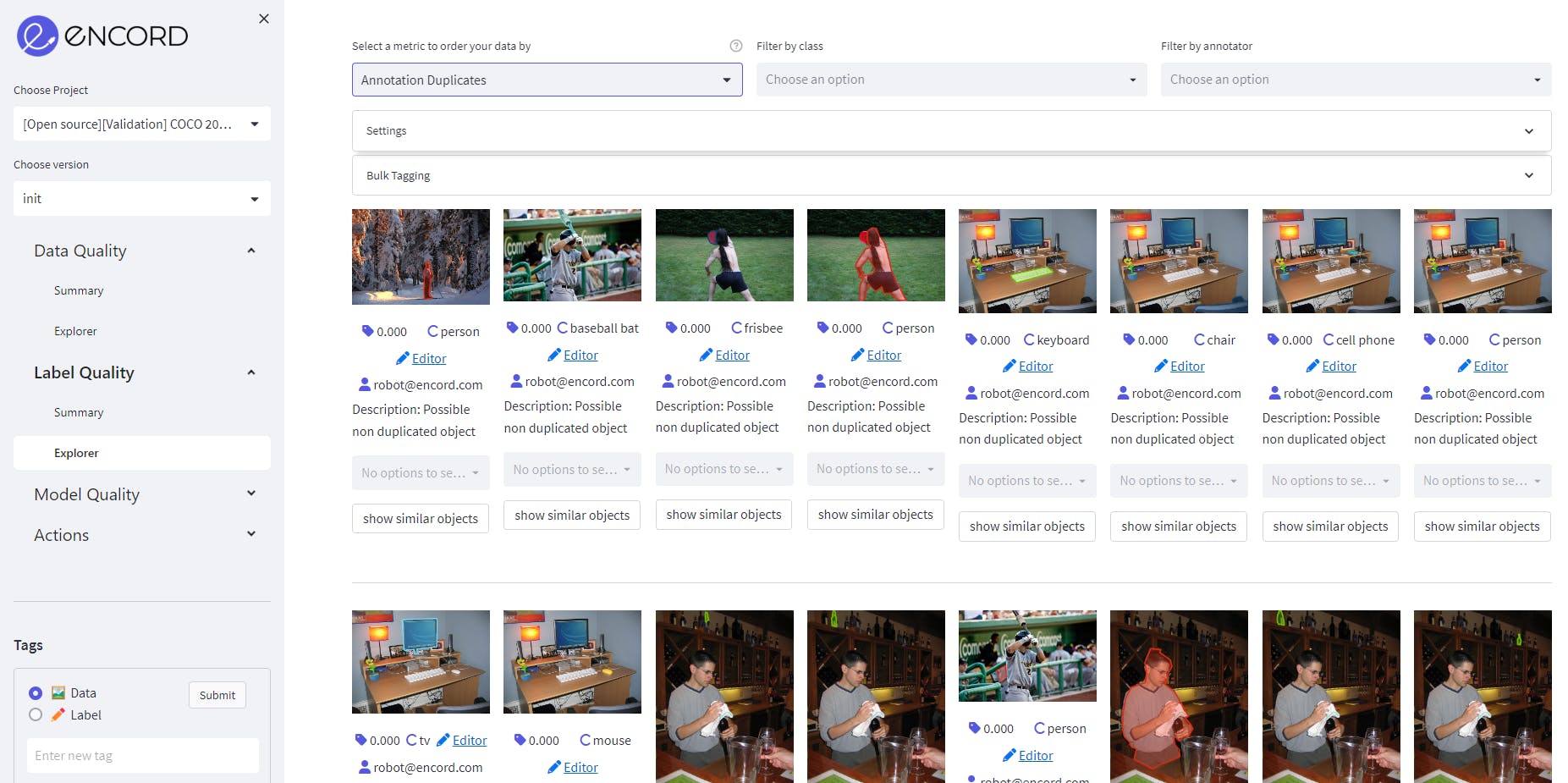
Model quality metrics also take into account the model predictions. The most obvious use-case for these metrics is acquisition functions, answering the question, "What should I label next?" There are many intelligent ways to leverage model predictions to answer this question. Here is a list of some of the most common ones:

Using Model Confidence as a model quality metric on MS COCO validation dataset on Encord. It shows the predictions where the confidence is between 50% to 80%.
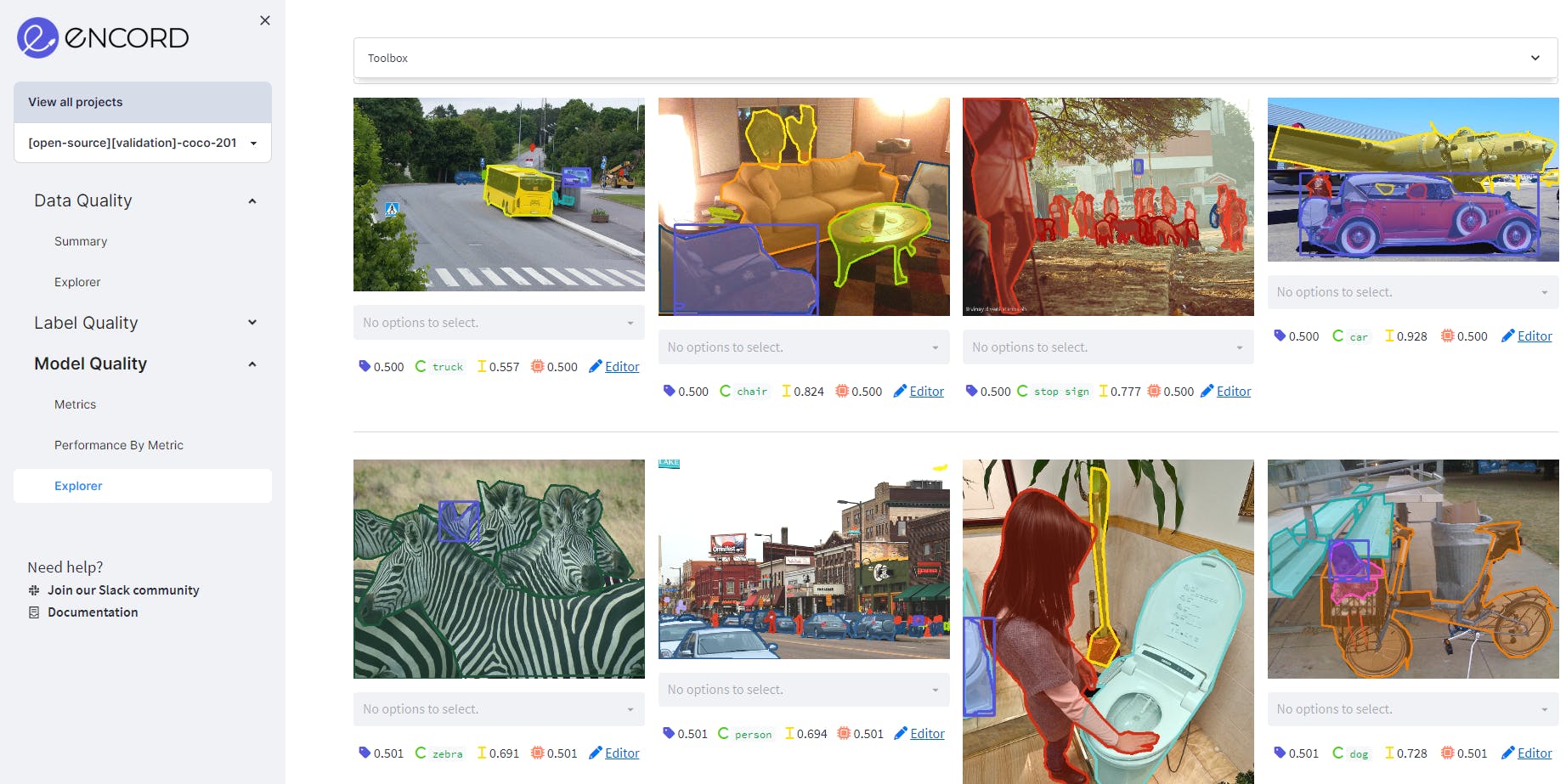
Using Polygon Shape Similarity as a model quality metric on MS COCO validation dataset on Encord. It ranks objects by how similar they are to their instances in previous frames based on Hu moments. The more an object’s shape changes, the lower its score will be.
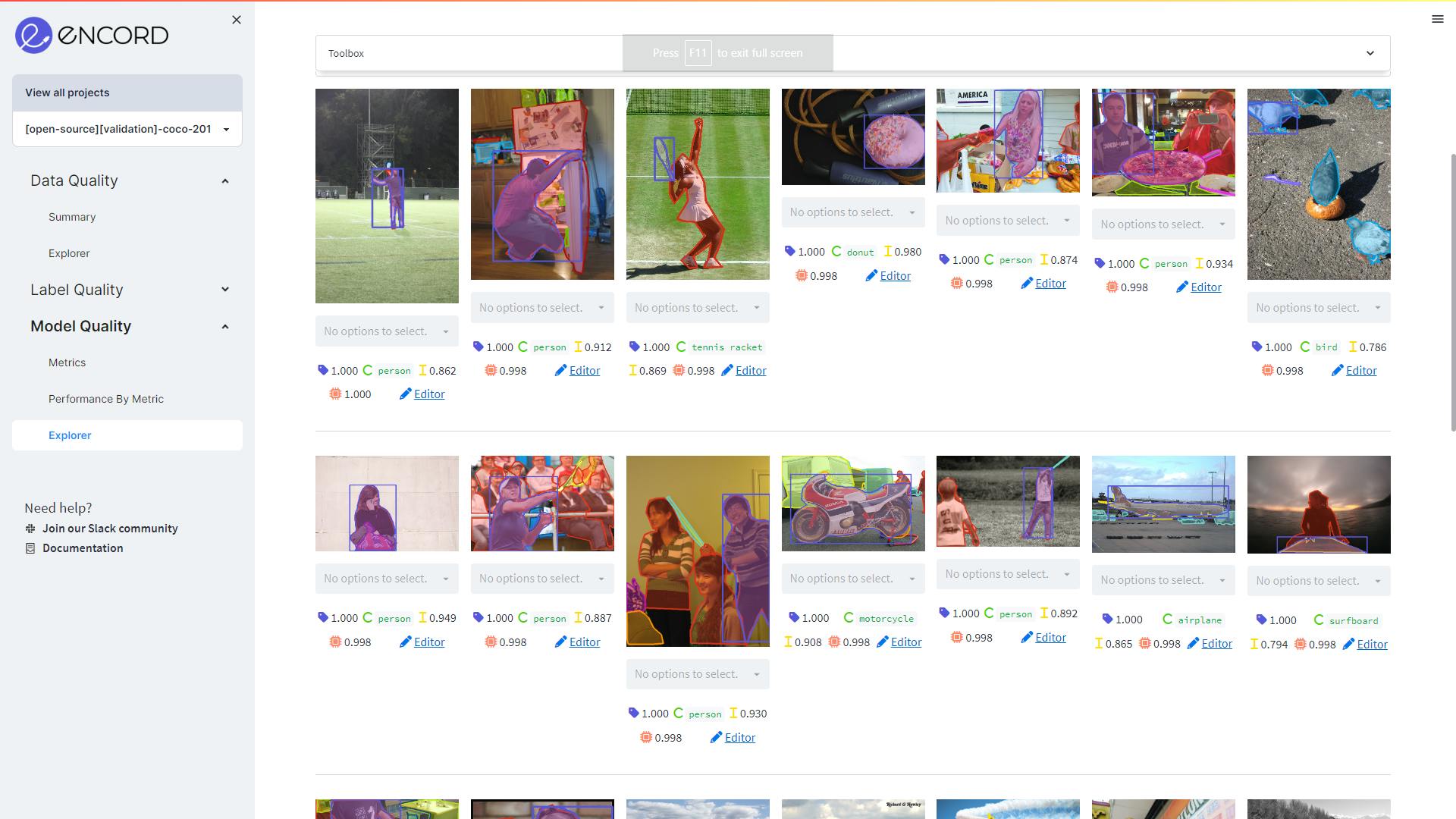
We have now reviewed some examples of common quality metrics already in Encord Active.
However, every machine learning project is different, and most likely, you have just the idea of what to compute to surface the data that you want to evaluate or analyze.
With Encord Active, you only need to define the per-data-point computation. The tool will handle everything from executing the computation to visualizing your data based on your new metric.
You may want to know when your skeleton predictions are occluded or in which frames of video-specific annotations are missing.
You could also get even smarter and compare your labels with results from foundational models like SAM.
These different use cases are situations where you would build your custom metrics.
You can find the documentation for writing custom metrics here or you can follow any of the links provided above to specific quality metrics and find their implementation on GitHub.
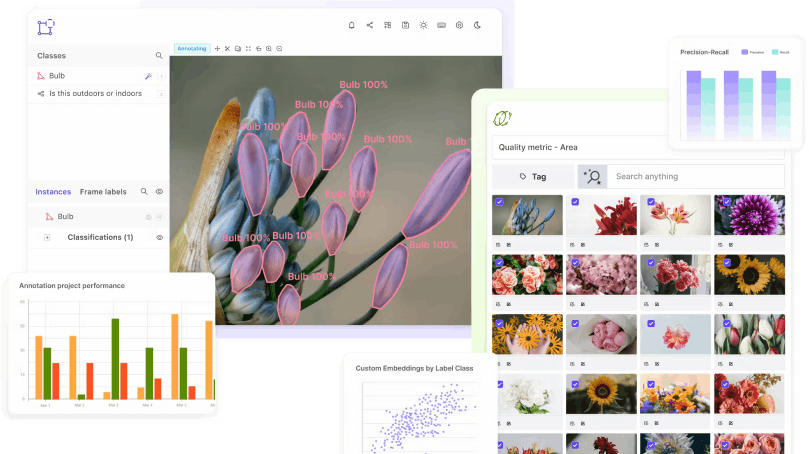
Quality Metrics constitute the foundation of systematically exploring, evaluating, and iterating on machine learning datasets and models.
With Encord Active, it’s easy to define, execute, and utilize quality metrics to get the most out of your data, models, and annotators. We use them for slicing data, comparing data, tagging data, finding label errors, and much more. The true power of these metrics is that they can be arbitrarily specific to a problem at hand.
Ready to improve the performance and quality metrics of your CV models?
Sign-up for an Encord Free Trial: The Active Learning Platform for Computer Vision, used by the world’s leading computer vision teams.
AI-assisted labeling, model training & diagnostics, find & fix dataset errors and biases, all in one collaborative active learning platform, to get to production AI faster. Try Encord for Free Today.
Want to stay updated?
Join the Encord Developers community to discuss the latest in computer vision, machine learning, and data-centric AI
Join the communitySoftware To Help You Turn Your Data Into AI
Forget fragmented workflows, annotation tools, and Notebooks for building AI applications. Encord Data Engine accelerates every step of taking your model into production.